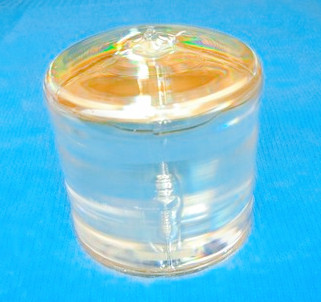The crystal structure of lithium tantalate (LiTaO3, LT for short) is similar to LN crystal, belonging to cubic crystal system, 3m point group, R3c space group. LT crystal has excellent piezoelectric, ferroelectric, pyroelectric, acousto-optic, electro-optic and nonlinear optical properties. LT crystal also has stable physical and chemical properties, easy to obtain large size and high quality single crystal. Its laser damage threshold is higher than LN crystal. So LT crystal has been widely used in surface acoustic wave devices.
The commonly used LT crystals, like LN crystals, are easily grown by Czochralski process in a platinum or iridium crucible using a lithium-deficient ratio of solid-liquid co-composition. In 1964, A single LT crystal was obtained by Bell Laboratories, and in 2006, a 5-inch diameter LT crystal was grown by Ping Kang et al.
In the application of electro-optic Q-modulation, LT crystal is different from LN crystal in that its γ22 is very small. If it adopts the mode of light pass along optical axis and transverse modulation which is similar to LN crystal, its operating voltage is more than 60 times that of LN crystal under the same condition. Therefore, when LT crystal is used as electro-optic Q-modulation, it can adopt the double crystal matching structure similar to RTP crystal with x-axis as light direction and y-axis as electric field direction, and using its large electro-optic coefficient γ33 and γ13. The high requirements on the optical quality and machining of LT crystals limit its application of electro-optic Q-modulation.
LT (LiTaO3) crystal- WISOPTIC
Post time: Nov-12-2021

